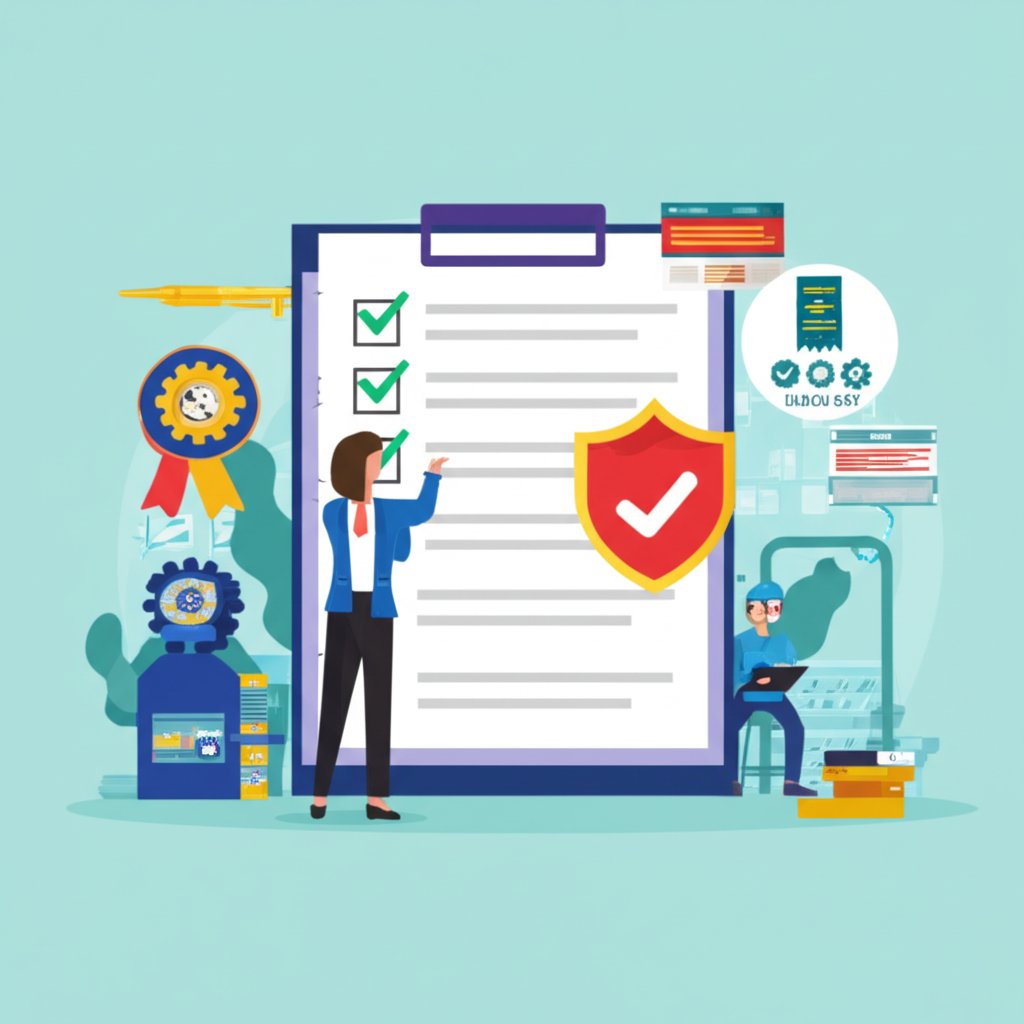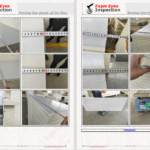
Introduction to China Factory Audit
When you’re sourcing products from overseas, especially from China, how do you know your supplier can truly deliver on quality, compliance, and reliability? Imagine placing a large order, only to discover late in the process that the factory lacks the capabilities or ethical standards you expected. Sounds complex? This is precisely why a china factory audit has become a non-negotiable step for businesses looking to protect their investments and reputation.
A factory audit in China is more than a simple walkthrough or a video call. It’s a structured, on-site evaluation of a manufacturer’s facilities, operational systems, and ability to meet your requirements. Typically, this process is carried out by you, your team, or an independent third-party auditor using a tailored checklist. The goal? To verify that the supplier can consistently deliver what you need—on time, to specification, and in line with industry standards.
Let’s break down what a china factory audit usually involves:
- Facility Inspection: Assess the physical condition of the factory, including equipment, production lines, and storage areas.
- Process Review: Examine production workflows, quality control procedures, and documentation.
- Compliance Check: Evaluate adherence to legal, safety, and ethical standards—covering labor laws, environmental regulations, and certifications.
- Capability Assessment: Determine whether the factory has the technical know-how, capacity, and resources to fulfill your order.
Why is this so critical for importers? Without a thorough audit, you risk encountering costly delays, defective products, or even falling victim to scams. A detailed audit report gives you a clear, unbiased picture of the supplier’s strengths, weaknesses, and potential risks—empowering you to make informed sourcing decisions and avoid unpleasant surprises later on.
Who benefits most from factory audits in China? While any business sourcing internationally can gain value, audits are especially vital for sectors where quality and compliance are non-negotiable. Think:
- Electronics and electrical goods
- Textiles and apparel
- Consumer products (toys, homeware, kitchenware)
- Automotive parts and industrial components
For these industries, even minor lapses in quality or safety can lead to product recalls, reputational damage, or regulatory penalties. By making factory audits part of your sourcing strategy, you’ll notice fewer surprises, stronger supplier relationships, and greater confidence in your supply chain.
Throughout this article, we’ll guide you through the essential steps, benefits, and best practices for conducting an effective factory audit in China—helping you ensure quality, mitigate risks, and build a resilient global sourcing program.

Unlocking the Key Benefits of a China Factory Audit for Global Businesses
Why Audit Suppliers in China? Core Benefits You Can’t Afford to Miss
When you’re weighing the pros and cons of sourcing from China, it’s natural to wonder: is a factory audit really necessary? Imagine discovering a supplier’s promises don’t match reality—defective products, missed deadlines, or even outright fraud. This is where the real value of a china factory audit comes into play, transforming uncertainty into confidence and risk into opportunity.
Let’s break down the most important china factory audit benefits for your business. Each point below is rooted in real-world experience and industry best practices, helping you understand why audits are an essential part of smart sourcing strategy.
- Risk Mitigation: Audits help you identify red flags—such as poor working conditions, substandard equipment, or falsified certifications—before you commit. For example, a U.S. retailer avoided a $100,000 loss by uncovering a supplier’s lack of proper quality controls during a technical audit. This proactive step can save you from costly surprises down the line.
- Quality Assurance: By evaluating a factory’s quality management systems, you ensure products meet your standards and specifications. Regular audits keep quality consistent, reduce defect rates, and help you avoid expensive recalls or returns.
- Supplier Verification: Not all suppliers are who they claim to be. Audits verify the legitimacy of the business, confirm their production capabilities, and check for valid licenses and certifications. This step weeds out unreliable or fraudulent suppliers, protecting your brand and investment.
- Legal and Ethical Compliance: Audits ensure your suppliers adhere to labor laws, environmental regulations, and industry standards. This protects your business from legal disputes, fines, and reputational harm. Demonstrating social responsibility can also strengthen your relationships with customers and stakeholders.
- Negotiation Leverage: A detailed audit report gives you the facts needed to negotiate better terms, pricing, or corrective actions. Suppliers are more likely to take you seriously when you base discussions on objective findings rather than assumptions.
- Long-Term Cost Savings: While audits require an upfront investment, they often pay for themselves by preventing costly errors, delays, or product failures. By catching issues early, you avoid the snowball effect of small problems turning into major expenses.
- Continuous Improvement: Audits aren’t just about catching problems—they’re a tool for ongoing supplier development. Regular assessments encourage factories to maintain high standards and adapt to changes in regulations or your business needs.
Still wondering how these benefits play out in real sourcing scenarios? For a step-by-step walkthrough of the entire audit process—including practical tips, challenges unique to China, and actionable advice—check out the in-depth guide from Eagle Eyes. It’s a must-read for anyone serious about building resilient, high-quality supply chains in China.
With these advantages in mind, it’s clear that a well-executed audit offers far more than just a compliance check. In the next section, we’ll dive into the core components of a comprehensive China factory audit checklist, so you know exactly what to look for on the ground.
Key Components of a Comprehensive China Factory Audit Checklist
What Does a China Factory Audit Checklist Really Cover?
Ever wondered what’s actually scrutinized during a china factory audit? Imagine stepping into a supplier’s facility with a checklist in hand—what should you look for to ensure nothing is overlooked? The answer lies in a well-structured, adaptable checklist that covers every critical aspect of supplier capability and compliance. Whether you’re new to international sourcing or a seasoned pro, understanding these core elements will help you make smarter, safer decisions for your business.
Core Sections of a Factory Audit Checklist
A thorough china factory audit checklist isn’t just a box-ticking exercise—it’s your roadmap to evaluating a supplier’s strengths, weaknesses, and risks. Here are the key areas you’ll typically find in a comprehensive audit template, based on industry best practices and global standards:
- Factory Profile & Legitimacy
- Business licenses and certifications
- Ownership structure and company history
- Export and compliance records
- Facilities & Premises
- Layout, cleanliness, and maintenance
- Safety protocols and emergency exits
- Security measures and access controls
- Quality Management Systems (QMS)
- Adherence to standards (e.g., ISO 9001)
- Process controls and documentation
- Staff training on quality procedures
- Production Capabilities & Technical Competence
- Equipment and technology in use
- Production capacity and lead times
- Workforce skills and R&D resources
- Incoming Material Inspection & Sourcing
- Supplier vetting and approval processes
- Material conformity checks
- Traceability and record-keeping
- In-Process & Final Quality Control
- In-process inspections and defect tracking
- Final product quality checks
- Handling of non-conforming materials
- Packaging, Storage, and Shipping
- Packaging practices (protection from dust, moisture, sunlight)
- Storage conditions and inventory management
- Shipping marks and documentation
- Social Compliance
- Labor law adherence (wages, hours, age verification)
- Workplace safety and employee welfare
- Zero tolerance for child or forced labor
- Environmental Management
- Waste management and emissions control
- Resource usage and sustainability practices
- Compliance with local and international environmental standards
- Communication & Documentation
- Internal communication protocols
- Complaint handling and corrective action procedures
- Document control and record retention
Why Customization Matters
Sounds like a lot? That’s because every business has unique needs. While a standard template helps ensure consistency, the most effective factory audit checklist is tailored to your priorities—whether that’s environmental sustainability, advanced technical requirements, or strict social compliance. For example, if you’re sourcing electronics, you might add sections on ESD (Electrostatic Discharge) controls or hazardous material handling. If your brand is committed to ethical sourcing, you’ll want deeper dives into labor practices and community impact (China Quality Inspection).
Customizing your checklist also means you can adjust scoring or weighting to reflect what matters most for your business. Some companies use a score calculator to objectively compare suppliers and prioritize follow-up actions based on risk level or strategic importance.
Meeting Factory Audit Requirements in China
Ever asked yourself, “Are there universal requirements for factory audits in China?” While most audits are guided by global standards (like ISO 9001 for quality or ISO 14001 for environment), local regulations, customer expectations, and industry-specific benchmarks all play a role. The best practice is to align your factory audit requirements China with both international norms and your own business needs—ensuring you don’t just meet the minimum but set your supply chain up for long-term success.
With a comprehensive, customized checklist in hand, you’ll feel confident walking into any supplier’s facility—knowing exactly what to look for and how to assess it. Next, let’s explore how these elements come together in the actual audit process, so you know what to expect from start to finish.

Navigating the China Factory Audit Process
Ever wondered what really happens during a china factory audit process? If the idea of auditing a supplier in China feels overwhelming, you’re not alone. Many businesses picture a maze of paperwork, language barriers, and unfamiliar procedures. But when you break it down, each step serves a clear purpose—ensuring you get reliable, high-quality results from your manufacturing partner.
How to Audit a Factory in China: Step-by-Step Workflow
Let’s walk through the typical phases of a factory audit in China. Whether you’re sending your own team or hiring a third-party expert, these steps will help you understand what to expect—and how to get the most out of the process. Imagine this as your roadmap to a successful supplier evaluation.
- 1. Pre-Audit Preparation
- Define Objectives: Start by clarifying what you want to achieve—quality assurance, regulatory compliance, ethical sourcing, or a mix of priorities.
- Choose Audit Type: Decide if you need a basic capability check, an in-depth technical review, or a social compliance audit. Tailor your checklist accordingly.
- Research & Plan: Gather background on the supplier, review previous audit results (if available), and communicate your expectations with both the auditing team and the factory. Confirm audit dates and logistics.
- Audit Checklist: Customize your checklist based on your industry, product, and compliance needs. Include all critical areas—from production capacity to environmental practices.
- 2. On-Site Execution
- Opening Meeting: Kick off with introductions, explain the audit scope, and set expectations for the day. This helps build trust and ensures cooperation from the factory team.
- Facility Tour: Walk through the factory to observe operations firsthand. Examine production lines, machinery, storage areas, and safety measures. Take notes and photos for documentation.
- Document Review: Request and review licenses, certifications, quality records, training logs, and compliance documents. This step verifies that paperwork matches reality.
- Staff Interviews: Speak with managers and workers to assess their understanding of procedures, workplace conditions, and company policies.
- Process Observation: Watch key production processes in action. Check if quality controls are being followed at every stage, from raw materials to finished goods.
- 3. Data Collection & Analysis
- Gather all findings, supporting evidence, and observations during the visit.
- Document any non-conformities, risks, or areas needing improvement.
- Cross-check information from interviews, documents, and on-site observations for consistency.
- 4. Closing Meeting
- Summarize preliminary findings with factory management.
- Clarify any uncertainties or discrepancies before leaving the site.
- Set expectations for the timeline and next steps, including when to expect the audit report.
- 5. Audit Report Generation
- The auditor prepares a detailed report, summarizing all findings, supporting evidence, and photographs.
- Highlight both strengths and weaknesses, categorizing non-conformities by severity.
- Include actionable recommendations for corrective actions and improvements.
- 6. Corrective Action Planning & Follow-Up
- Share the audit report with the supplier and agree on a corrective action plan for any issues found.
- Set clear timelines for implementing improvements and request documented proof or re-audits as needed.
- Use the audit findings to inform future sourcing decisions and ongoing supplier development.
What to Expect at Each Stage
Sounds like a lot of steps? Each phase is designed to build a complete, objective picture of your supplier’s capabilities and compliance. For instance, the preparation phase ensures you’re focused and ready; the on-site execution uncovers the real story behind the factory’s operations; and the reporting and follow-up stages turn observations into actionable improvements.
It’s worth noting that the best results come from open communication and a collaborative spirit. Treating the audit as a partnership—rather than a test—often leads to more honest findings and greater willingness from suppliers to improve.
By understanding the full china factory audit process, you’ll feel more confident navigating each step and know exactly how to audit a factory in China. In the next section, we’ll explore how to interpret the audit report and turn its insights into real, measurable improvements for your business.
Interpreting Your China Factory Audit Report for Actionable Insights
How to Read and Use a China Factory Audit Report
When the audit is over, you’re handed a detailed china factory audit report—but what do you actually do with it? Sounds complex? You’re not alone if you’ve ever felt overwhelmed by pages of findings, technical terms, and a mix of strengths and weaknesses. The real value of any audit lies not just in the data collected, but in how you interpret and act on it. Let’s break down how to turn your factory audit report into a powerful tool for smarter sourcing and ongoing improvement.
Typical Structure of a China Factory Audit Report
Imagine opening your audit report. While formats can vary, most comprehensive reports include these core sections:
- Executive Summary: High-level overview of the audit’s purpose, scope, and major findings.
- Factory Profile: Key details about the supplier—ownership, licenses, production capabilities, and export history.
- Audit Checklist Results: Section-by-section ratings (often with scoring or color codes) covering areas like quality systems, social compliance, and environmental management.
- Non-Conformities: List of observed issues, categorized by severity—major, minor, or critical.
- Supporting Evidence: Photographs, document excerpts, and interview notes backing up each finding.
- Recommendations: Practical suggestions for corrective actions and process improvements.
- Supplier Comments & Sign-Off: Space for the factory’s response and acknowledgment of the findings.
Assessing Non-Conformities and Critical Risks
Not all findings are created equal. When interpreting audit results China, focus on these key points:
- Major Non-Conformities: These are serious issues—such as lack of business licenses, unsafe working conditions, or repeated quality failures. They typically require immediate corrective action before you proceed with orders.
- Minor Non-Conformities: Less severe, but still important. Think of things like incomplete documentation or minor deviations from process. These should be addressed, but may not be deal-breakers if the supplier is responsive.
- Critical Risks: Any finding that could lead to legal violations, supply chain disruption, or reputational harm—such as child labor, environmental breaches, or falsified records. These are red flags that may warrant walking away or requiring a re-audit.
For example, if your report notes that the factory lacks a valid export license, that’s a major non-conformity with immediate impact on your ability to import goods. If you see repeated minor issues—like inconsistent training records—it could signal deeper management problems that need monitoring.
Evaluating Supplier Responsiveness
How a supplier responds to audit findings is just as important as the findings themselves. Ask yourself:
- Did the factory management acknowledge the issues in the report?
- Are they willing to share documentation or evidence of corrective actions?
- Do they propose realistic timelines for improvement?
- Is there openness to follow-up audits or ongoing dialogue?
Suppliers who are transparent and proactive in addressing findings are far more likely to become reliable long-term partners.
Turning Insights into Action: Practical Steps
So, you’ve identified the gaps—now what? Here’s how to make your china factory audit report work for you:
- Develop a Corrective Action Plan: Work with your supplier to outline specific steps for addressing each non-conformity. Assign responsibilities and agree on deadlines.
- Set Clear Improvement Timelines: For major issues, require proof of correction (photos, records, or a follow-up visit) before releasing new orders. For minor issues, set reasonable deadlines and monitor progress.
- Monitor and Follow Up: Schedule regular check-ins or re-audits to ensure improvements are sustained. Use the audit report as a baseline for future evaluations.
- Document Everything: Keep a record of all communications, corrective actions, and evidence provided. This helps protect your business and demonstrates due diligence to customers or regulators.
Imagine you discover that a supplier’s fire safety measures are inadequate. Instead of just flagging the issue, you work together to implement new protocols, provide training, and verify improvements with a follow-up audit. This not only reduces risk, but also builds trust and accountability with your supplier.
For a deeper dive into best practices for interpreting audit results and maximizing report value, check out Eagle Eyes’ comprehensive guide. Their walkthrough covers real-life examples, severity ratings, and practical tips tailored to the unique challenges of auditing in China.
By mastering the art of interpreting your audit report, you’ll transform raw data into actionable insights—empowering you to make informed decisions, drive continuous improvement, and strengthen your global supply chain. Next, we’ll tackle the common challenges businesses face during audits in China, and how you can avoid the most frequent pitfalls.
Common Challenges and Pitfalls in China Factory Audits (And How to Avoid Them)
Ever wondered why some audits in China fail to deliver the results you expect? Imagine investing time and resources into a factory audit, only to discover later that quality issues still slip through—or worse, the factory you visited wasn’t the one producing your goods. These china factory audit challenges are more common than you might think. Let’s break down the most frequent pitfalls and, more importantly, how you can sidestep them for a smoother, more reliable audit experience.
Typical China Factory Audit Pitfalls and How to Overcome Them
From language barriers to clever show-factory tactics, the landscape is filled with obstacles that can undermine your due diligence. The table below pairs the most common factory audit pitfalls China with practical solutions, helping you turn challenges into opportunities for stronger supplier oversight.
| China Factory Audit Challenge | How to Avoid or Overcome |
|---|---|
| Language Barriers & Cultural Nuances Misunderstandings due to language differences or unfamiliar business etiquette can lead to missed details or misinterpreted requirements. |
|
| Show Factories & Staged Audits Some suppliers may present a well-prepared facility that is not the actual production site, or hide weak areas by steering the audit tour. |
|
| Auditor Inexperience or Lack of Authority Inexperienced auditors may perform only surface-level checks or be easily influenced by factory management. |
|
| Lack of Transparency & Hidden Supply Chains Some suppliers withhold information about their sub-suppliers or key component sources, exposing you to hidden risks. |
|
| Over-Reliance on Certificates & Paperwork Some buyers trust certificates or documents without verifying their authenticity or real-world application. |
|
| Inadequate Follow-Up & Action Even after issues are flagged, some buyers fail to ensure corrective actions are implemented or improvements are sustained. |
|
Practical Tips for Avoiding Audit Pitfalls
- Don’t take anything at face value—always verify what you see and hear on-site.
- Prepare your own audit plan and checklist, rather than relying solely on the factory’s tour or agenda.
- Be skeptical of unusually low prices or promises of very fast delivery—they often signal corners being cut elsewhere.
- Build relationships, but keep interactions professional—avoid being distracted by hospitality or gifts.
- Document every step of the audit, including photos, interviews, and discrepancies.
By anticipating these common china factory audit challenges and proactively addressing them, you’ll set yourself up for a more effective, reliable audit. Next, let’s explore how regular, constructive audits can do more than just catch problems—they can also drive continuous improvement and build stronger partnerships with your suppliers.

Leveraging China Factory Audits for Continuous Supplier Improvement and Stronger Partnerships
When you think of a china factory audit, do you picture it as a one-time hurdle to clear before placing your first order? Imagine instead that each audit is a stepping stone—helping you and your supplier grow stronger together, year after year. Sounds ambitious? In reality, using audits as tools for continuous improvement factory audit China can transform your supply chain from a series of transactions into a network of collaborative partnerships.
How Audits Drive Supplier Development and Quality Enhancement
Regular audits aren’t just about catching mistakes—they’re about setting a standard and working together to raise the bar. Here’s how the process supports ongoing supplier development China audit and quality improvement:
- Spotting Areas for Growth: Each audit reveals not only risks but also opportunities for better processes, technology upgrades, or staff training. For example, you might discover outdated machinery slowing down production, or gaps in worker safety training. By addressing these, you and your supplier can boost efficiency and product quality.
- Building a Culture of Accountability: Transparent sharing of audit results encourages suppliers to take ownership of their performance. When feedback is specific and constructive, it becomes a roadmap for improvement, not just a list of shortcomings.
- Implementing Corrective Actions Together: Rather than simply demanding changes, collaborative action plans help both parties align on solutions, timelines, and responsibilities. This joint approach fosters trust and ensures improvements are meaningful and lasting.
- Tracking Progress Over Time: By conducting audits at regular intervals—annually, or even more frequently for critical suppliers—you can monitor improvements, spot recurring issues, and celebrate milestones. This ongoing feedback loop supports continuous improvement and helps suppliers stay motivated.
Strengthening Relationships Through Transparency and Communication
Imagine the difference between a supplier who dreads audits and one who welcomes them as opportunities to shine. Open, honest communication is the key. Here’s how you can foster a partnership mindset:
- Share Audit Results Promptly: Provide clear, actionable feedback and invite the supplier to discuss findings and share their perspective.
- Recognize Achievements: When a supplier makes significant improvements or exceeds expectations, acknowledge their efforts. Recognition can be as simple as a thank-you note or as formal as a preferred supplier status.
- Encourage Joint Problem-Solving: Work side-by-side to address root causes of issues, rather than focusing only on symptoms. This approach builds mutual respect and drives innovation.
Long-Term Benefits: Supply Chain Resilience and Product Excellence
Wondering if this investment in regular audits and relationship-building pays off? The answer is a resounding yes. Over time, you’ll notice:
- Greater Supply Chain Stability: Suppliers who are engaged in ongoing development are less likely to experience disruptive quality or compliance issues.
- Consistent Product Quality: Continuous monitoring and feedback lead to fewer defects, better on-time delivery, and higher customer satisfaction.
- Reduced Risk and Cost: Early identification and resolution of problems prevent expensive recalls, delays, and reputational damage.
- Stronger, More Reliable Partnerships: Trust and collaboration make it easier to weather challenges together—whether it’s a sudden surge in demand or new regulatory requirements.
In summary, turning audits into a regular, constructive process is one of the most effective ways to nurture supplier development, drive quality, and build resilient supply chains in China. By focusing on transparency, joint action, and continuous improvement, you’re not just protecting your business—you’re creating long-term value for everyone involved.
Next, we’ll recap the vital role of China factory audits in successful sourcing and offer some final tips for maximizing your audit strategy.
Conclusion
When you look back at the journey of sourcing from China, what stands between a thriving global supply chain and costly setbacks? For many businesses, the answer is clear: a well-executed china factory audit. Imagine the peace of mind that comes from knowing your suppliers are not just capable, but also compliant, ethical, and reliable. That’s the real foundation of china factory audit success—and it’s within reach for every importer willing to make audits a core part of their sourcing strategy.
Why Audits Are Essential for International Sourcing
Think about the risks that can derail your sourcing plans: defective products, regulatory violations, labor abuses, or hidden supply chain gaps. As we’ve explored, a thorough factory audit does more than just tick boxes—it gives you a transparent, on-the-ground view of your supplier’s true capabilities and practices. Here’s a quick recap of why audits are indispensable for quality control China:
- Risk Mitigation: Audits uncover hidden issues before they escalate, from production bottlenecks to non-compliance with labor or environmental laws.
- Quality Assurance: By evaluating management systems, equipment, and process controls, audits ensure your products consistently meet your standards and reduce the chance of costly recalls.
- Ethical Sourcing: Audits verify that suppliers comply with local and international ethical standards, safeguarding your brand reputation and supporting responsible business practices.
- Continuous Improvement: Far from being a one-off event, regular audits drive ongoing supplier development, foster transparency, and strengthen long-term partnerships.
Making Audits a Continuous Process—Not a One-Time Event
Sounds like a lot of work? It is—but it’s also the surest way to build a resilient, high-performing supply chain. The most successful importers treat audits as an ongoing process, not just a box to check before placing an order. By scheduling regular factory evaluations, sharing results transparently, and collaborating on corrective actions, you set the stage for continuous improvement and sustainable success.
- Conduct audits before onboarding new suppliers and as part of ongoing supplier management.
- Use audit findings to inform corrective action plans, negotiate better terms, and set clear expectations.
- Monitor progress over time and celebrate improvements—building trust and accountability on both sides.
Ready to Maximize Your Audit Strategy?
Imagine having a partner who not only understands the unique challenges of auditing in China but also provides practical guidance every step of the way. That’s where experienced providers like Eagle Eyes come in. Their comprehensive guide, Factory Audit Demystified: From Checklist to China Sourcing, is packed with actionable tips, real-world examples, and expert insights tailored to the complexities of the Chinese manufacturing landscape.
Whether you’re new to international sourcing or looking to strengthen your existing quality control program, making audits a regular part of your process is the key to china factory audit success. With the right strategy—and the right partners—you can ensure your products are safe, compliant, and consistently high-quality, no matter where they’re made.
So, as you plan your next sourcing move, ask yourself: Is your audit process robust enough to safeguard your brand and supply chain? If you’re ready to take the next step, start by exploring Eagle Eyes’ in-depth resources or connecting with their team for tailored support. Your journey to quality control excellence in China starts here.
China Factory Audit: Frequently Asked Questions
1. What is a China factory audit and why is it important?
A China factory audit is an on-site evaluation of a supplier’s facilities, systems, and compliance with quality and ethical standards. It is critical for businesses sourcing from China because it verifies capabilities, prevents costly issues, and ensures suppliers meet your requirements for quality, safety, and legality.
2. Do Chinese companies have to be audited?
Yes, according to China’s Company Law, all companies operating in China must conduct annual audits. For international buyers, conducting independent factory audits is essential to ensure suppliers meet both legal and business standards, reducing risks in the supply chain.
3. What areas are covered in a typical China factory audit checklist?
A comprehensive audit checklist covers factory legitimacy, facilities, quality management systems, production capabilities, sourcing, quality control, packaging, social compliance, environmental management, and documentation. Customizing the checklist to your business needs is key.
4. How can I avoid common pitfalls during a China factory audit?
To avoid pitfalls like language barriers, show factories, and over-reliance on certificates, use experienced bilingual auditors, verify documentation, insist on unannounced visits, and ensure robust follow-up on corrective actions. Collaboration and transparency with suppliers are essential.
5. How do I use a China factory audit report to improve supplier performance?
Use the audit report to identify major and minor non-conformities, assess critical risks, and evaluate supplier responsiveness. Develop corrective action plans, set improvement timelines, and monitor progress to drive continuous improvement and build stronger supplier partnerships.



